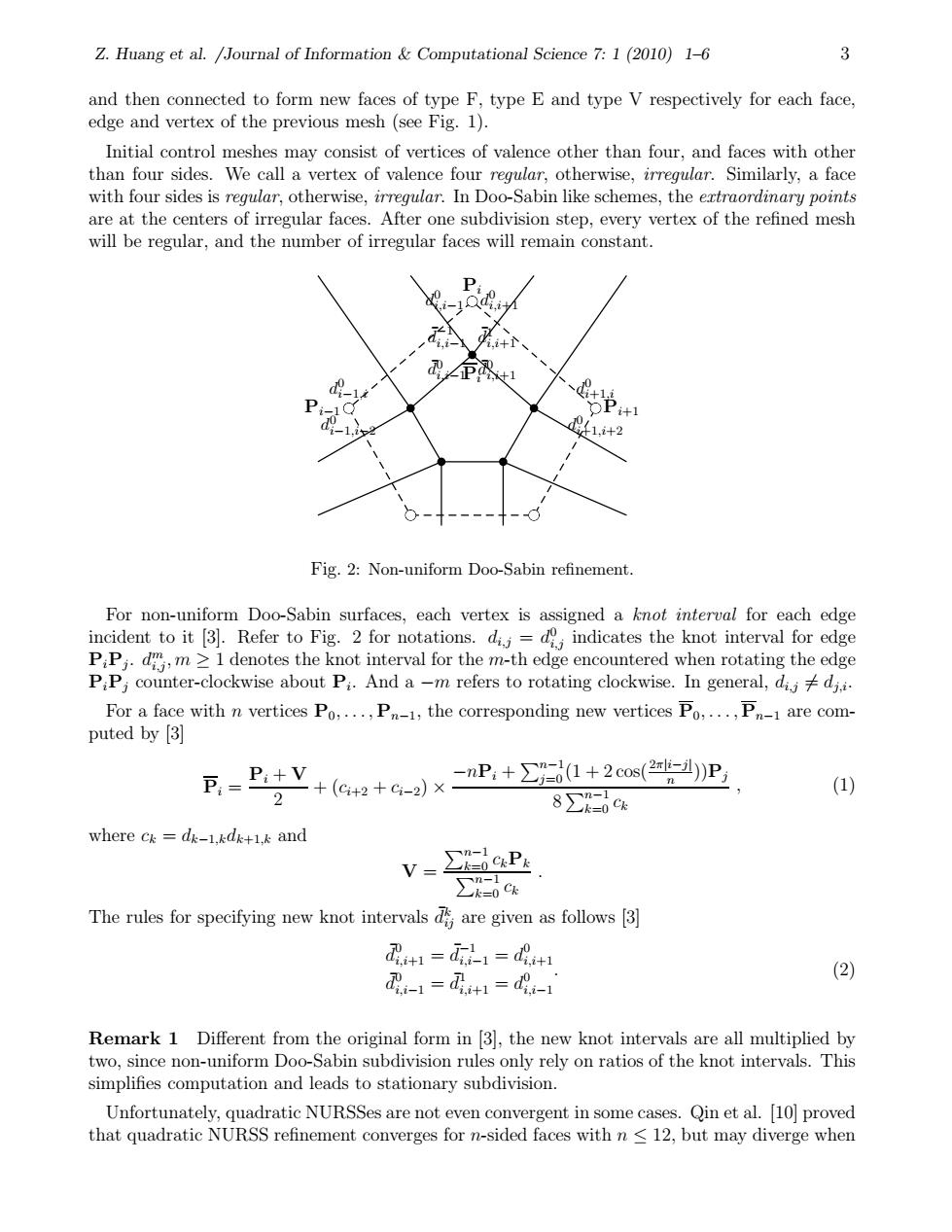正在加载图片...

Z.Hwung et a.Alournal of Information Computational Science 7:1 (2010)1-6 3 Fig:No-uniform Doo-Sabin refnement. 何htiP.,the P 8∑k where ce dx-1xdg+1 and v The rues for specifying new knot intervalsare given as follows o. Z. Huang et al. /Journal of Information & Computational Science 7: 1 (2010) 1–6 3 and then connected to form new faces of type F, type E and type V respectively for each face, edge and vertex of the previous mesh (see Fig. 1). Initial control meshes may consist of vertices of valence other than four, and faces with other than four sides. We call a vertex of valence four regular, otherwise, irregular. Similarly, a face with four sides is regular, otherwise, irregular. In Doo-Sabin like schemes, the extraordinary points are at the centers of irregular faces. After one subdivision step, every vertex of the refined mesh will be regular, and the number of irregular faces will remain constant. bc bc bc bc bc b b b b b Pi d 0 i,i+1 d 0 i,i−1 Pi−1 d 0 i−1,i d 0 i−1,i−2 Pi+1 d 0 i+1,i d 0 i+1,i+2 Pi ¯d 0 i,i+1 ¯d 0 i,i−1 ¯d 1 i,i+1 ¯d −1 i,i−1 Fig. 2: Non-uniform Doo-Sabin refinement. For non-uniform Doo-Sabin surfaces, each vertex is assigned a knot interval for each edge incident to it [3]. Refer to Fig. 2 for notations. di,j = d 0 i,j indicates the knot interval for edge PiPj . d m i,j , m ≥ 1 denotes the knot interval for the m-th edge encountered when rotating the edge PiPj counter-clockwise about Pi . And a −m refers to rotating clockwise. In general, di,j 6= dj,i. For a face with n vertices P0, . . . , Pn−1, the corresponding new vertices P0, . . . , Pn−1 are computed by [3] Pi = Pi + V 2 + (ci+2 + ci−2) × −nPi + Pn−1 j=0 (1 + 2 cos( 2π|i−j| n ))Pj 8 Pn−1 k=0 ck , (1) where ck = dk−1,kdk+1,k and V = Pn−1 k=0 ckPk Pn−1 k=0 ck . The rules for specifying new knot intervals ¯d k ij are given as follows [3] ¯d 0 i,i+1 = ¯d −1 i,i−1 = d 0 i,i+1 ¯d 0 i,i−1 = ¯d 1 i,i+1 = d 0 i,i−1 . (2) Remark 1 Different from the original form in [3], the new knot intervals are all multiplied by two, since non-uniform Doo-Sabin subdivision rules only rely on ratios of the knot intervals. This simplifies computation and leads to stationary subdivision. Unfortunately, quadratic NURSSes are not even convergent in some cases. Qin et al. [10] proved that quadratic NURSS refinement converges for n-sided faces with n ≤ 12, but may diverge when